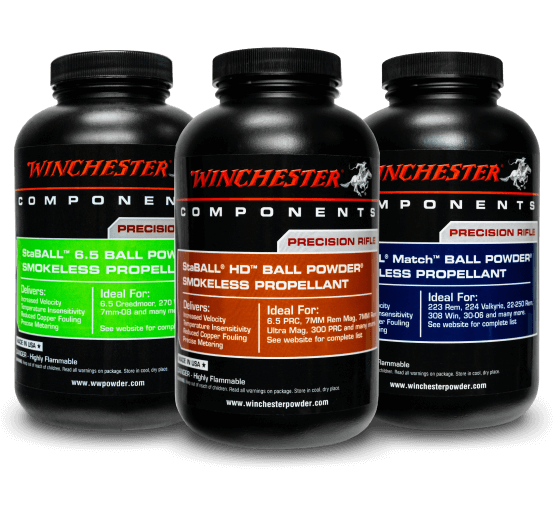All the load data you will ever need. All in one place. We’ve stockpiled a wealth of information that can help take your craft to the next level.
Select an option below to get started with the data center. Filter by cartridge, powder or gauge and refine search criteria to dial in the perfect load.
Basic procedures and practices for rifle, pistol and shotgun shell reloading.

This temperature-insensitive, double-base, BALL® Powder is stable in extremely hot or cold conditions and provides optimal loading density in cartridges appropriate for the burn speed. Its flawless metering delivers consistent velocity and pressure, reaching levels 50-75fps greater than other propellants in its class, depending on the cartridge.
| Crimp Depth | Velocity | Chamber Pressure |
| 0.030″ (too loose) | 1,308 fps | 9,300 psi |
| 0.050″ (normal reload crimp) | 1,329 fps | 10,500 psi |
| 0.070″ (too tight) | 1,351 fps | 11,900 psi |
| 0.090″ (very tight crimp) | 1,363 fps | 13,100 psi |
| VARMINT Loads (light weight, fast velocity) | MILITARY Duplicate Loads | HEAVY Bullet Loads |
|---|---|---|
| H322® Benchmark IMR 8208 XBR CFE 223 Varget® | Winchester 748 BL-C(2) H335 IMR 4198 H322® H4895 | CFE 223 Varget® IMR 4895 IMR 8208 XBR BL-C(2) |
| PREDATOR Loads (light weight, fast velocity) | MILITARY Duplicate Loads | HEAVY Bullet Loads |
|---|---|---|
| Benchmark H335® IMR 8208 XBR H322 IMR 3031® | BL-C(2) IMR 4895 H4895 Varget IMR 4064® | CFE 223 Varget® IMR 8208 XBR IMR 4064® Winchester 748 |
Can’t find the WAD you want for your shotshell load?
Check out the WAD Substitution Chart to find a replacement that will perform the same.
For more reloading education topics, safety information, reference data, warnings and
FAQs visit the Reloading Eductaion section.